I took a plane and a train on the 330-mile London to Edinburgh route. The race was closer than you might expect.
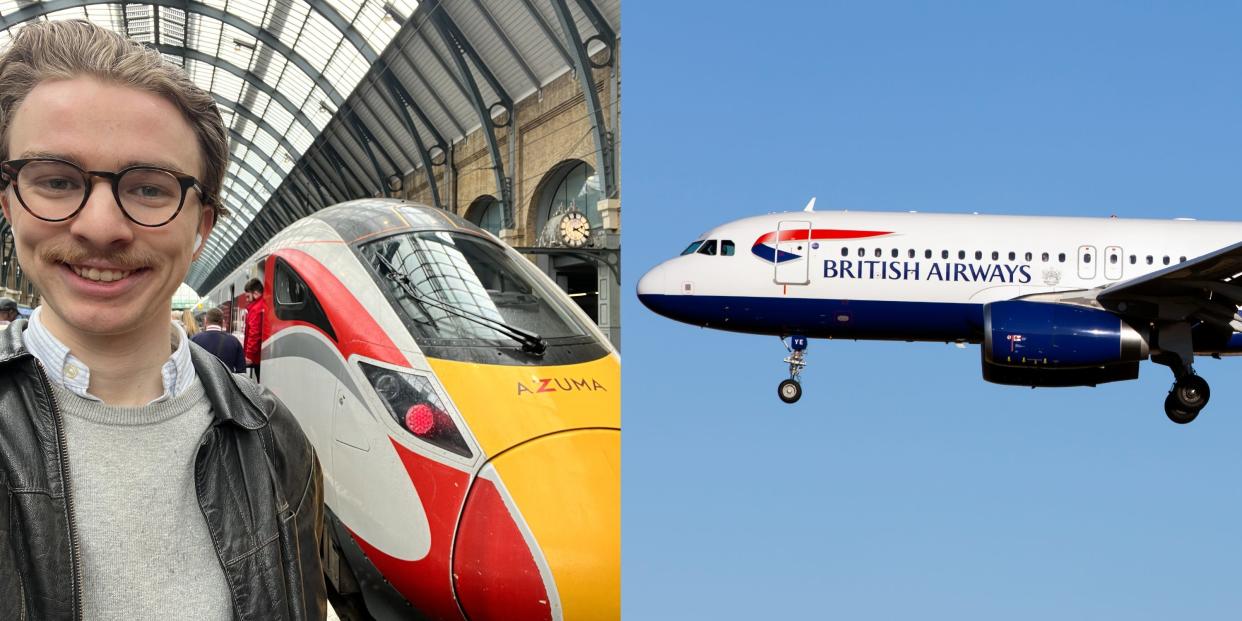
The 332 miles between London and Edinburgh takes a similar amount of time by plane or train.
I took both modes of transport and timed how long it took from the center of each city.
The train was only slightly longer, but cheaper, more comfortable — and more convenient.
The 332 miles between London and Edinburgh show a particularly narrow difference when traveling via train or plane.
While the flight takes about an hour compared to a nearly five-hour train ride, there's also time spent traveling to the airport and waiting to board.
I grew up near London, and because my dad is from Edinburgh, we visited the Scottish capital every summer. We flew once or twice, but it was typically easier to take the train.
Last month, I visited Edinburgh for a press event and took the opportunity to time my journeys. I traveled north on an LNER Azuma train and returned the next day on a British Airways Airbus A320.
The contest was indeed close, and even though the train took longer, it was cheaper and more enjoyable.
I started my stopwatch at Trafalgar Square in the heart of London.

A plaque here reads: "On the site now occupied by the statue of King Charles I was erected the original Queen Eleanor's cross, a replica of which stands in front of Charing Cross station. Mileages from London are measured from the site of the original cross."
Similarly, the center of Edinburgh is traditionally measured from a now-demolished post office near the train station.

Already, this highlights the main benefit of traveling by train — especially in a city like Edinburgh where the main attractions are in a compact area.
It was only a short walk to the nearest Tube station, and I was on a train within 8 minutes.
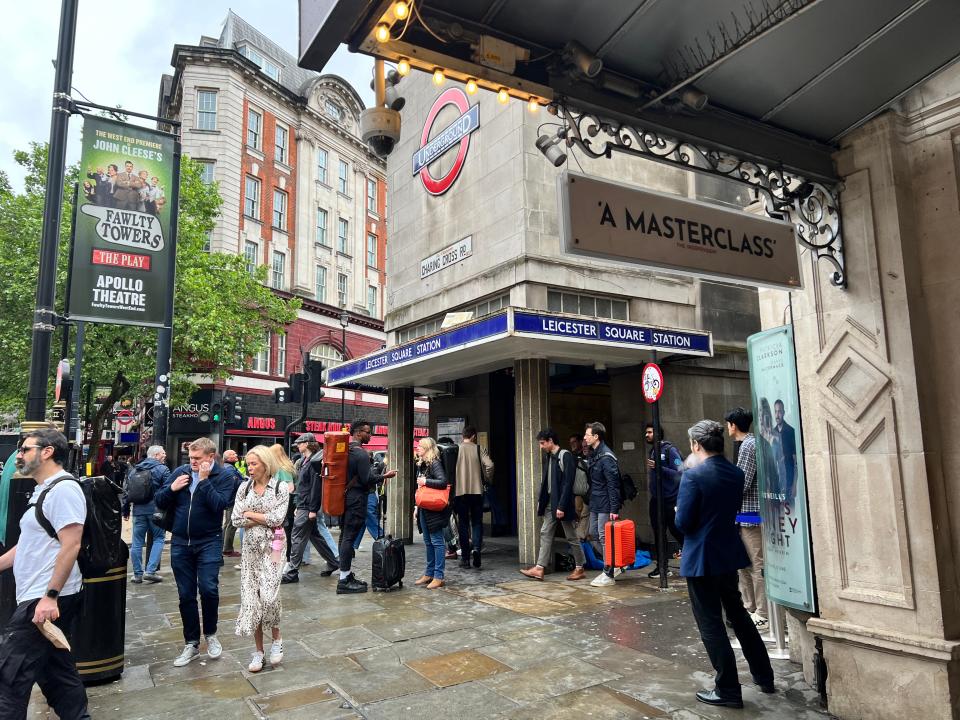
I arrived at King's Cross Station about 20 minutes before my train departed, which gave me plenty of time.
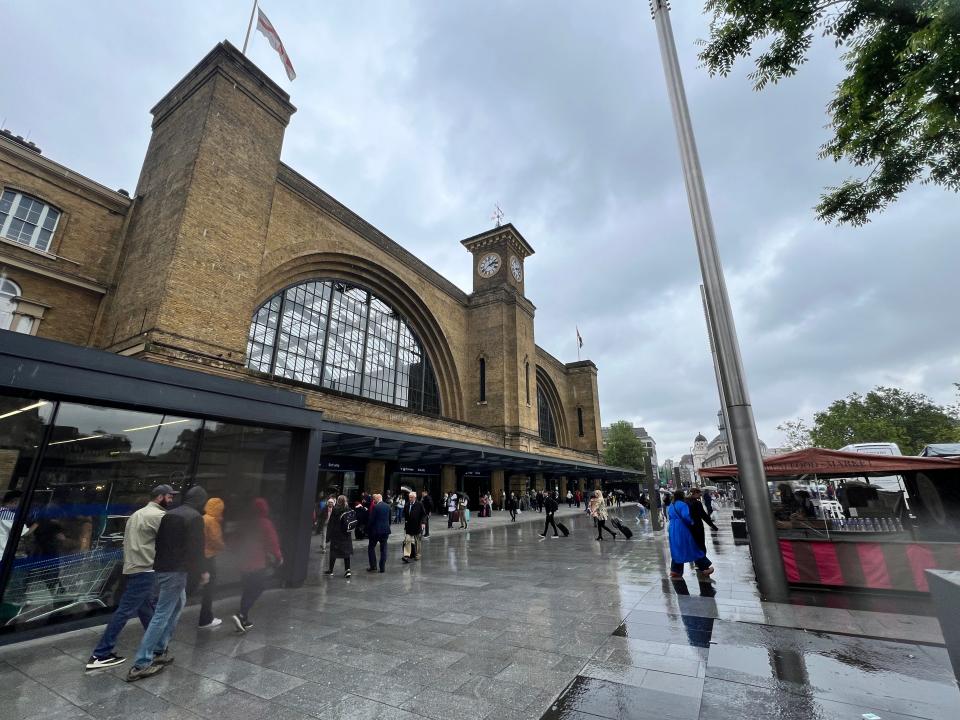
There was an unusually big crowd of people for a Wednesday afternoon because some other trains had been delayed. Luckily, mine was on time.
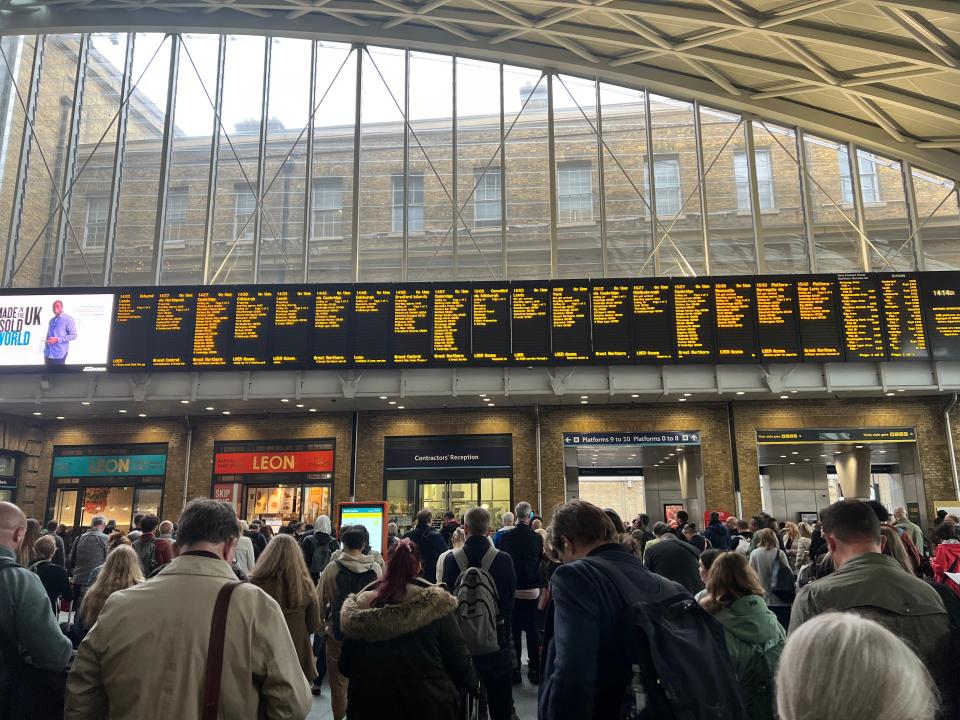
It was only a short wait before our platform number was announced and passengers flooded toward the ticket barriers. We departed on time, 37 minutes after I left Trafalgar Square.
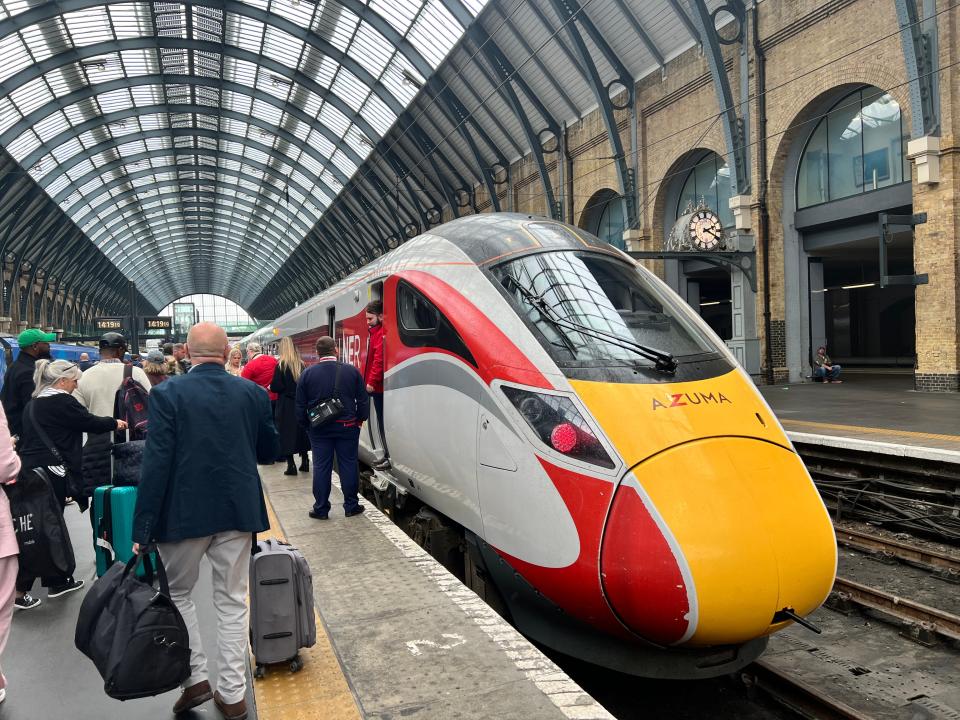
In Edinburgh, I took a 35-minute tram journey from the center to the airport. The security line was pretty speedy.
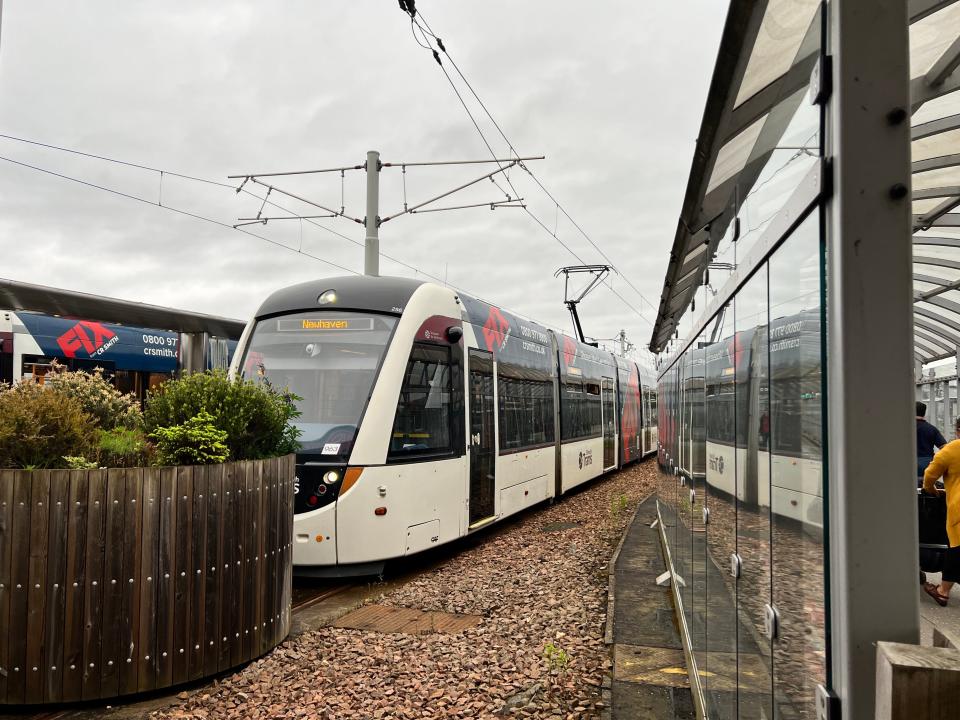
I arrived at the airport an hour and 50 minutes before my flight's departure time.
With time to sit around, I had lunch in a Wetherspoons pub. Given my experiment, I found all the train memorabilia ironic — but this also signals the strong history of British railways.
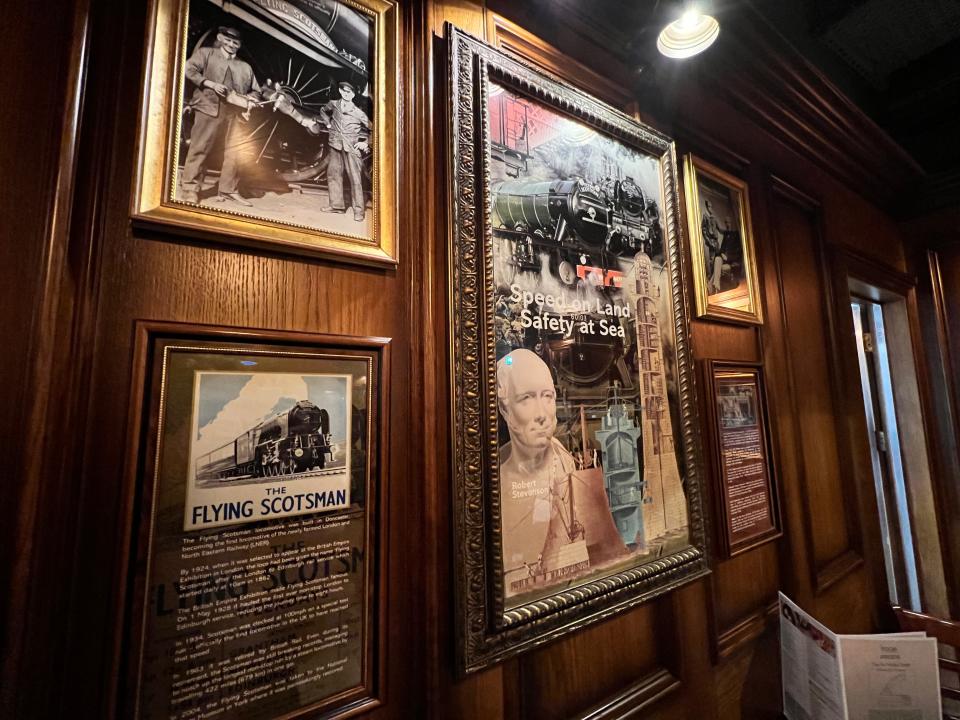
I'd been at the airport for an hour by the time the gate opened — then another 25 minutes before I boarded.
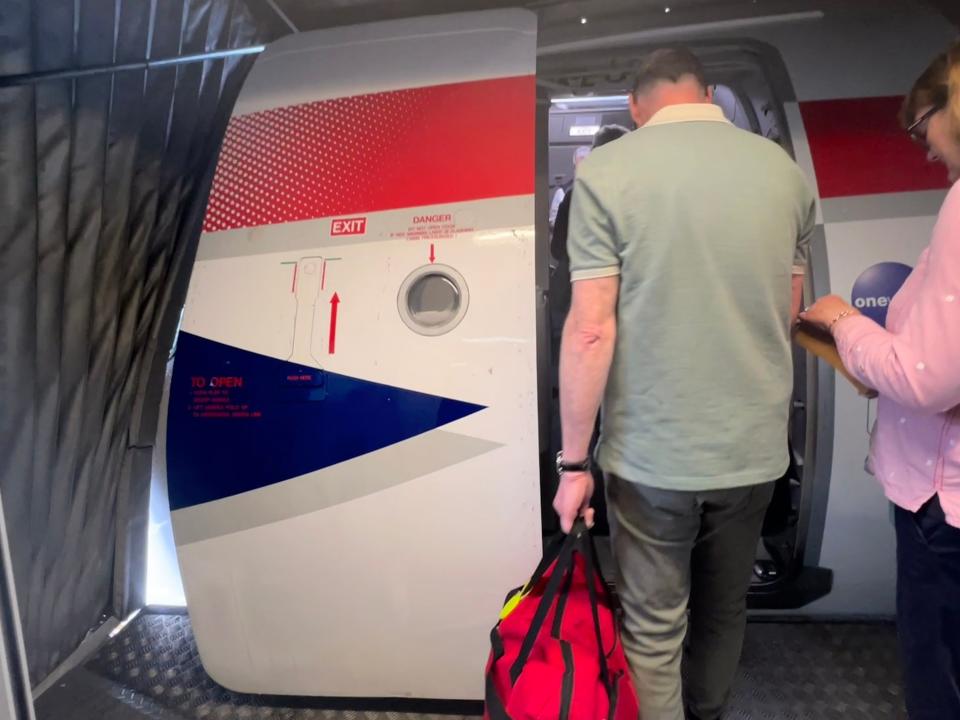
Unfortunately, my flight was delayed by 45 minutes. I adjusted for that on my timer, but we still wouldn't have taken off until two-and-a-half hours after I left Waverley station.
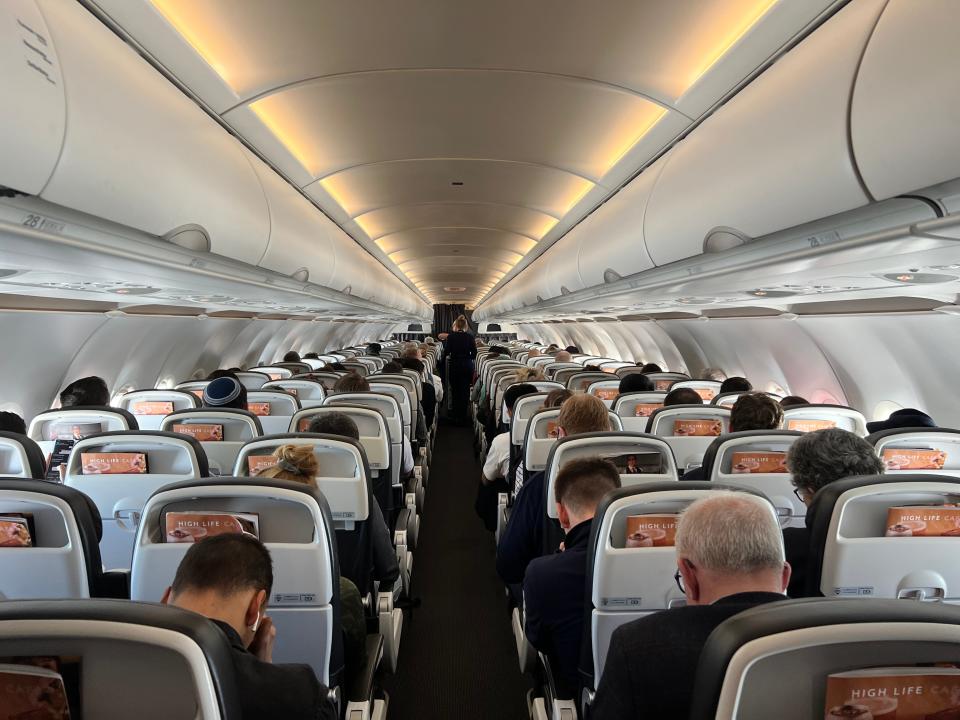
All the plane timings in this piece exclude the delay.
London to Edinburgh is clearly a popular route for BA, as before the safety demonstration, the pilot said: "I know many of you are probably frequent fliers."
For those regularly making this journey, there's the benefit of loyalty points which you wouldn't get on a budget airline or a train.
By the time we took off, my train had almost reached York, its third stop on the East Coast Main Line, and roughly halfway to Edinburgh.
But the flight itself would take just over an hour, traveling at roughly 300 mph versus the train's top speed of 125 mph.
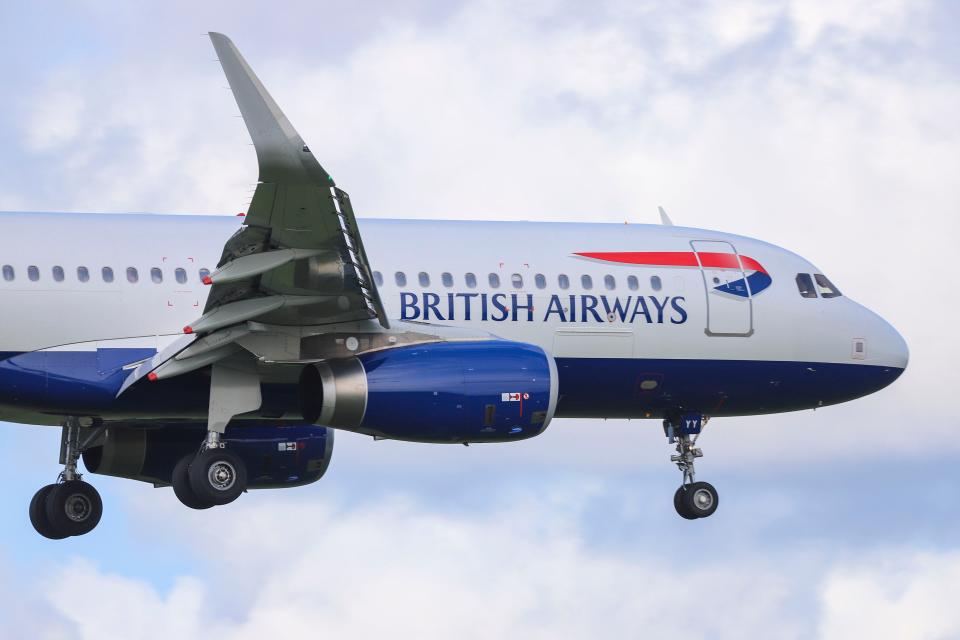
The only true high-speed rail in Britain goes between London and the Channel Tunnel. A second line on the West Coast, known as HS2, is planned to be Europe's fastest — but construction has been delayed and cut down.
On the other hand, the train is far better for the environment given that it carries more people. I traveled on a Class 801/2 which has 611 seats compared to the plane's 180.
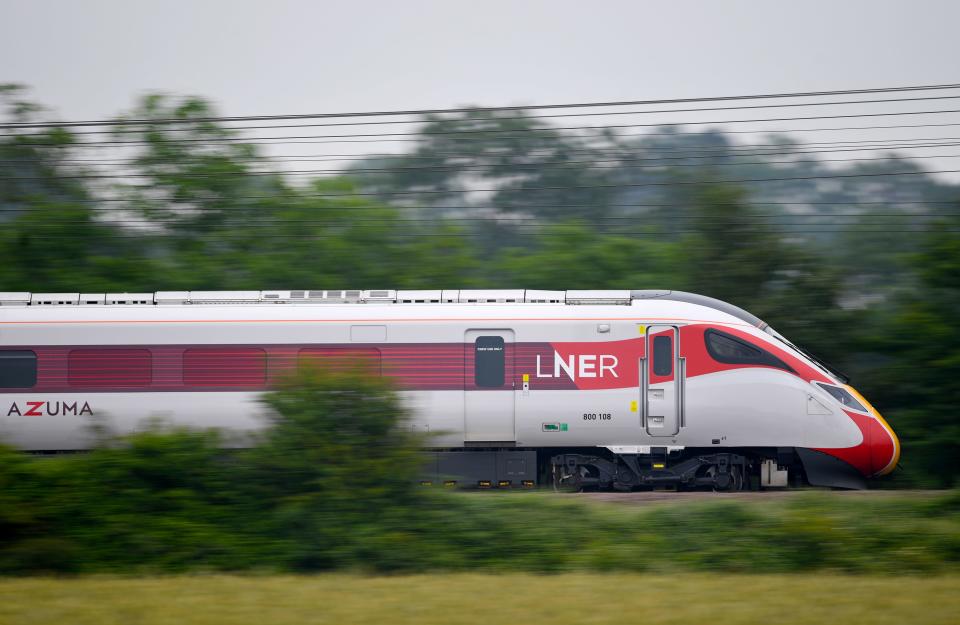
Soon after takeoff, the flight attendants offered passengers a free bottle of water and either peanuts or cookies.
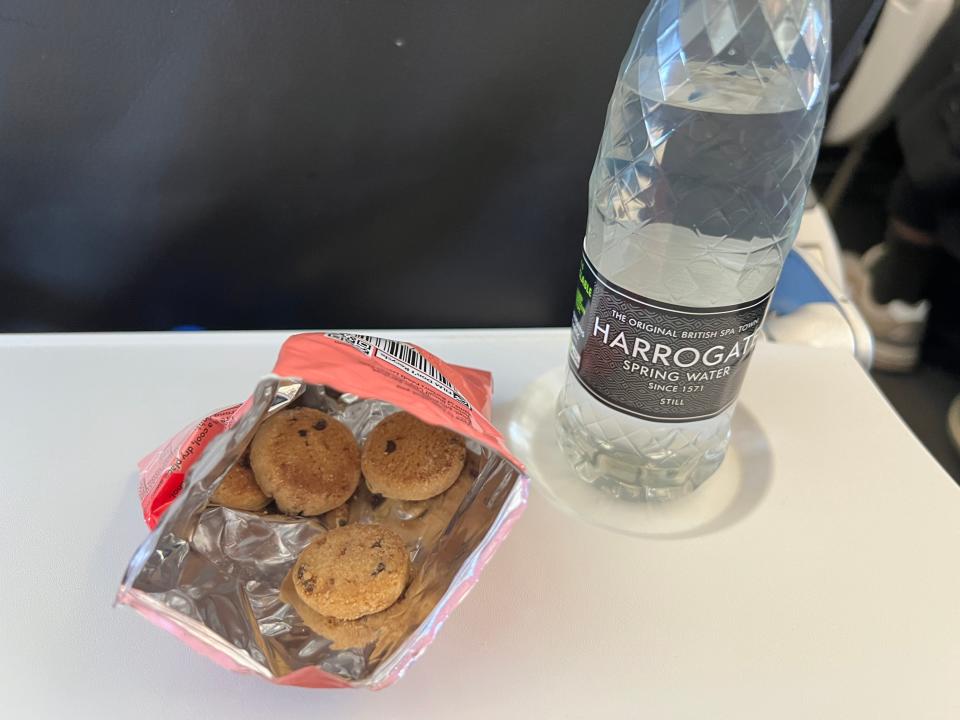
The LNER has a café car on board, but wasn't serving any hot food on my journey. You can also order via a QR code on the seatback.
However, I found the legroom and seat width to be less than ideal, even at 5-foot-9.
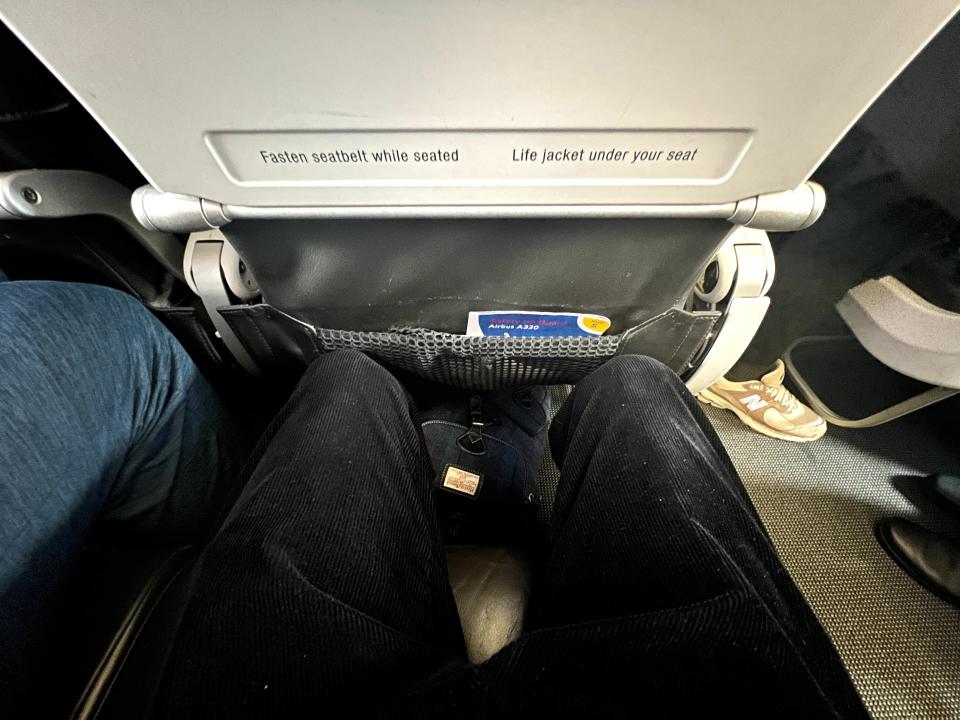
I flew on a British Airways Airbus A320 for $195. It's definitely better than flying budget.
On the train, I was comfortable with plenty of room — plus an extending tray table for my laptop.
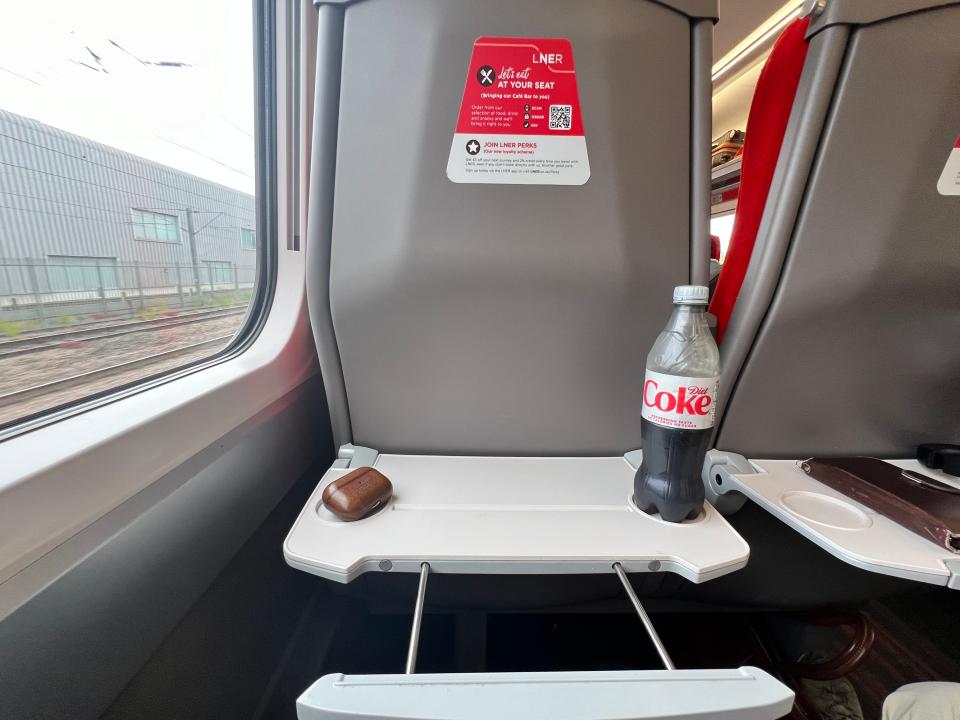
The free Wi-Fi wasn't great, but I wrote a Business Insider article. I spent the rest of the journey reading or taking in the views.
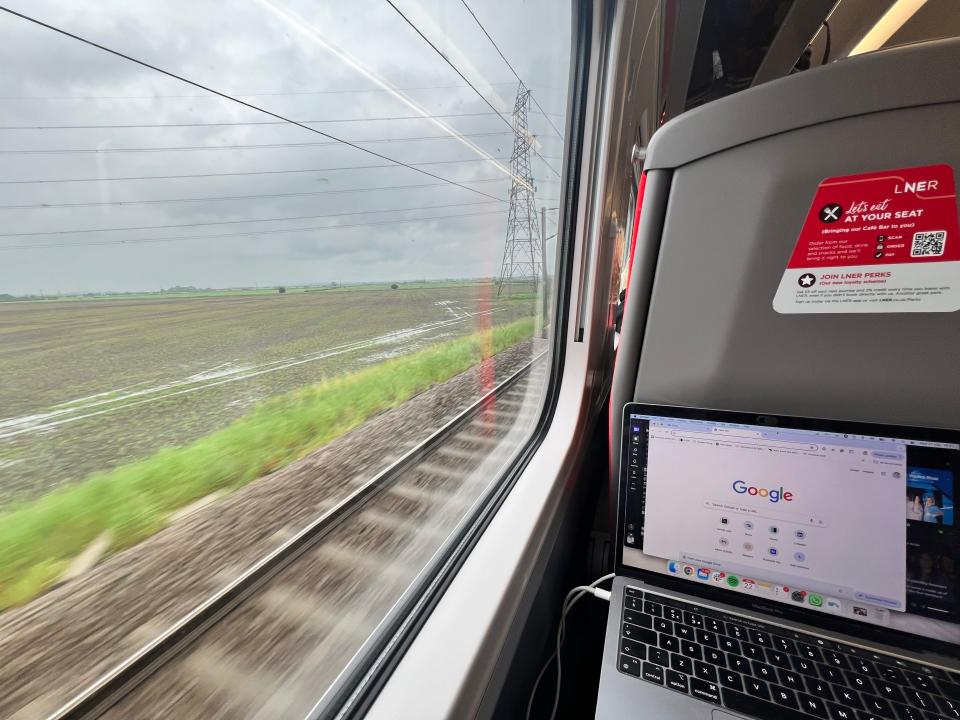
After three and a half hours total, the plane landed at a sunny Heathrow Airport, but it took another 20 minutes to leave, with time to deplane and a long jet bridge walk.
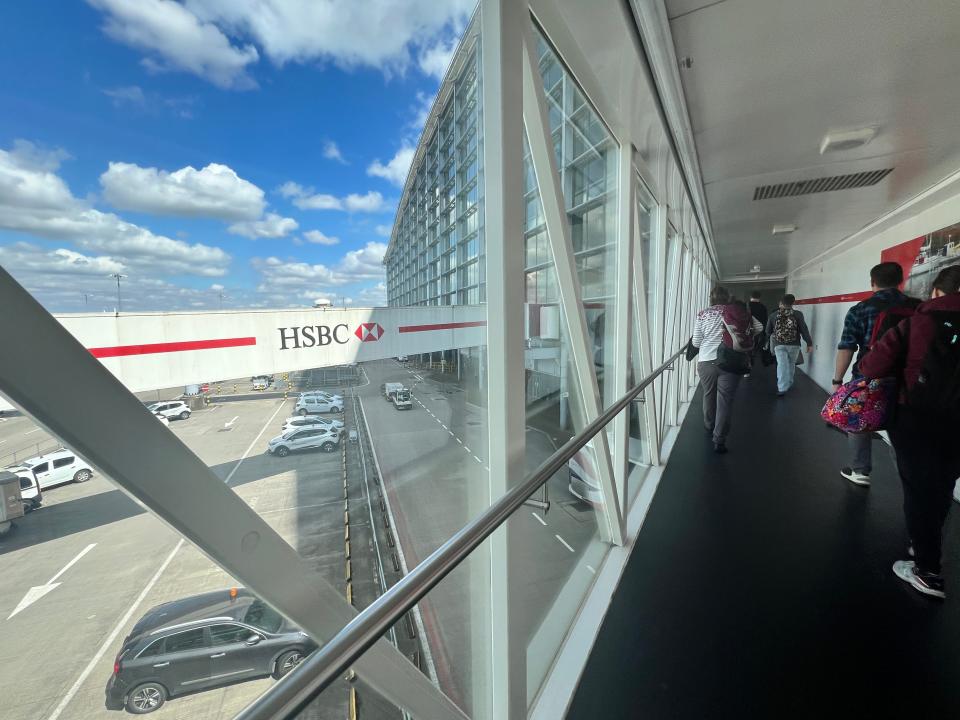
The timings were aided by the fact that I only had hand luggage.
I took the Elizabeth Line and the Tube back to Trafalgar Square, arriving 4 hours and 52 minutes later.
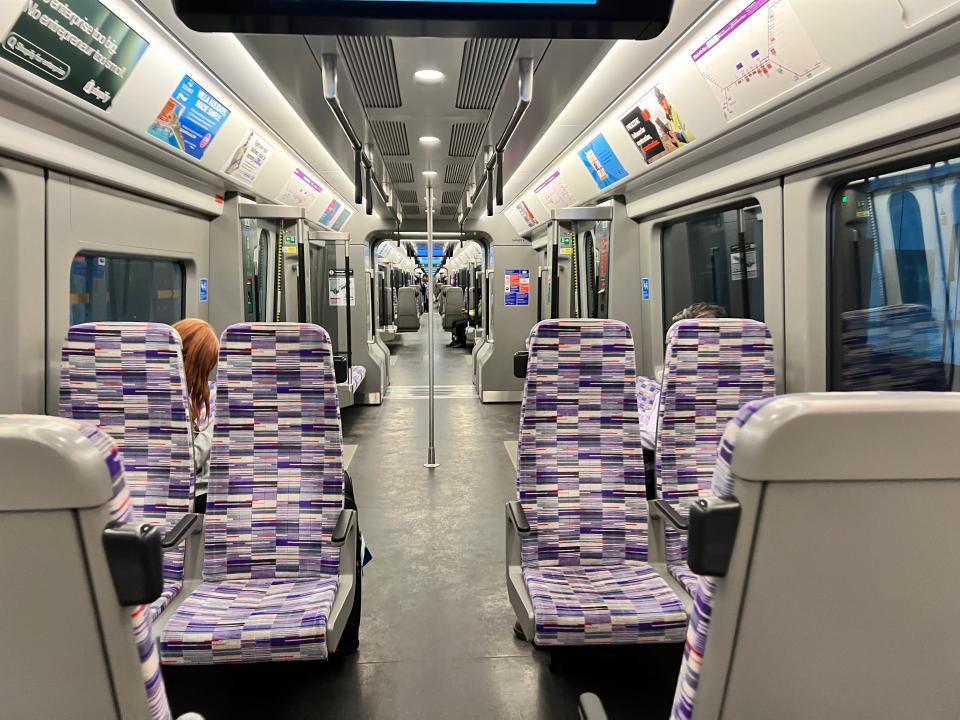
No budget airline uses Heathrow, so it would take even longer to reach the center if you flew with easyJet or Ryanair.
By train, I reached the center of Edinburgh after 5 hours and 21 minutes.
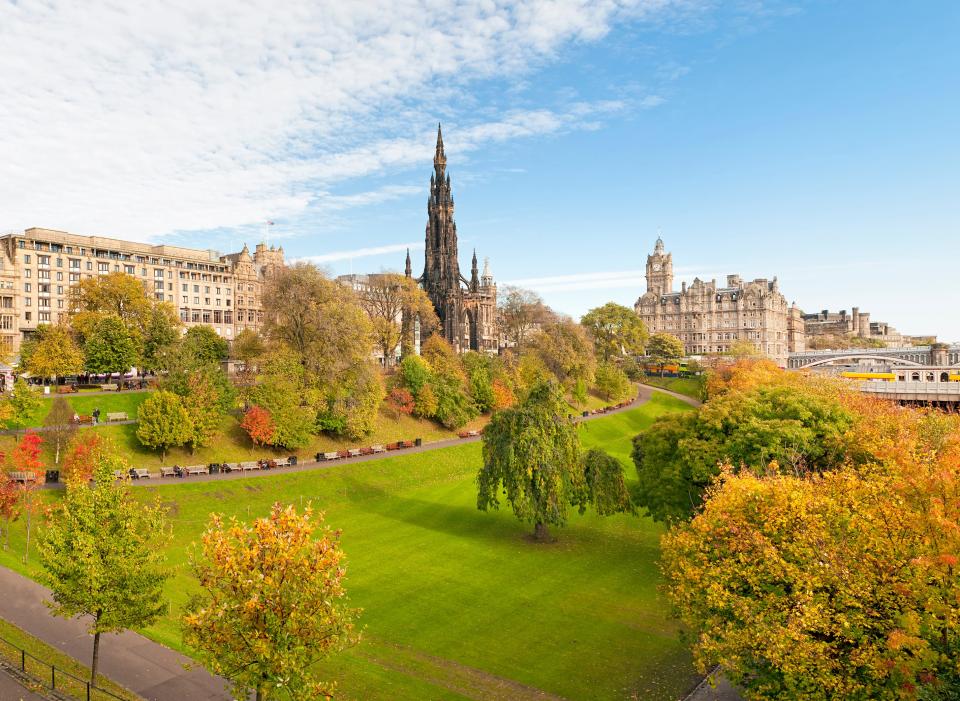
If you have checked bags or were traveling with a budget airline, the plane would take just as long, if not longer.
I found the train to be more comfortable and convenient. Plus, if you book in advance, it would likely be cheaper than a budget airline.
The LNER starts at £49 ($62). While a Ryanair flight starts at £17 ($21), the price of a checked bag — plus the train into London from Stansted Airport — would bring that up to £65 ($82).
So, if you're visiting the UK and want to visit both cities, the train would be cheaper since luggage is free.
Plus, there's the added benefit of seeing so much of the countryside, and some great seaside views too.
Read the original article on Business Insider


